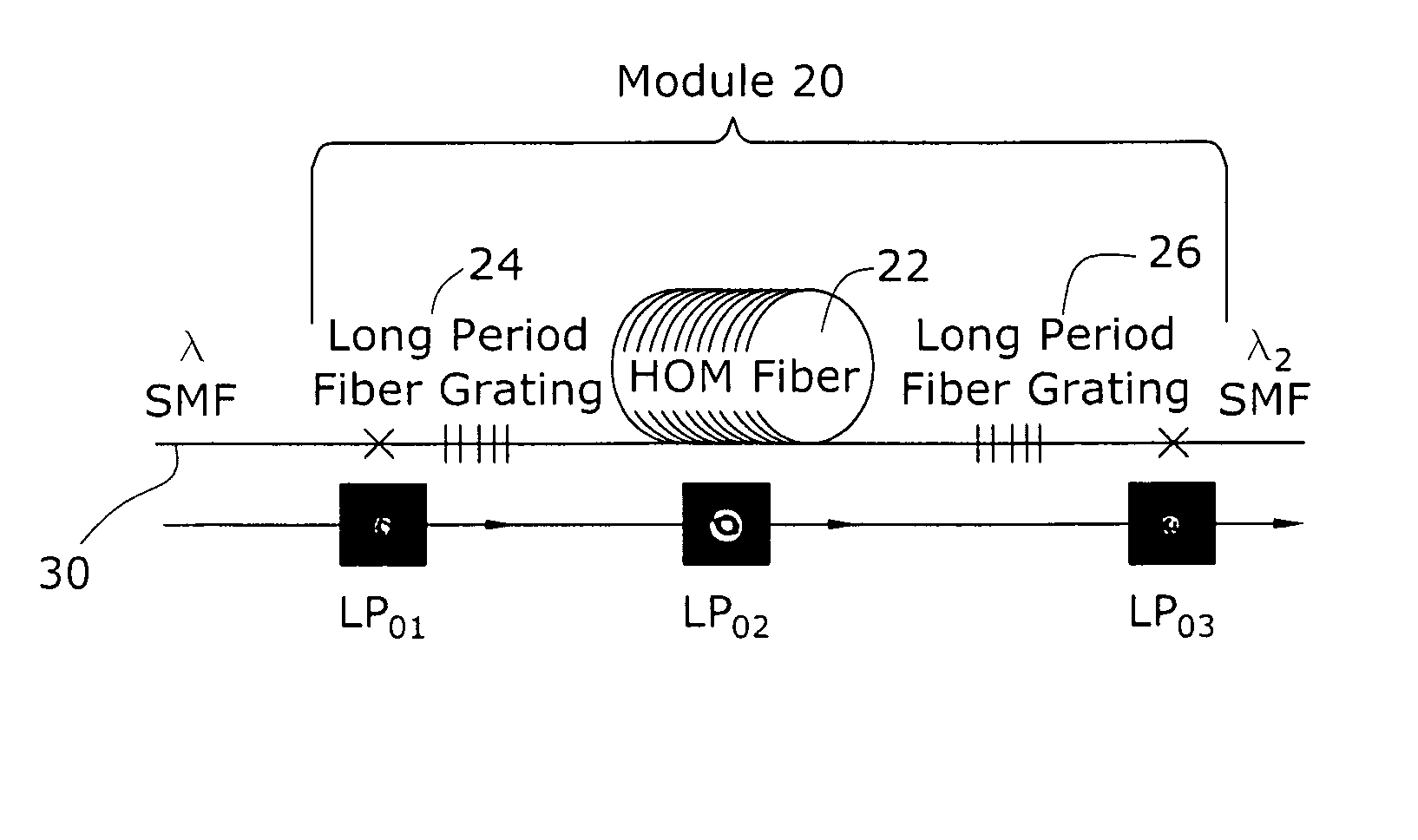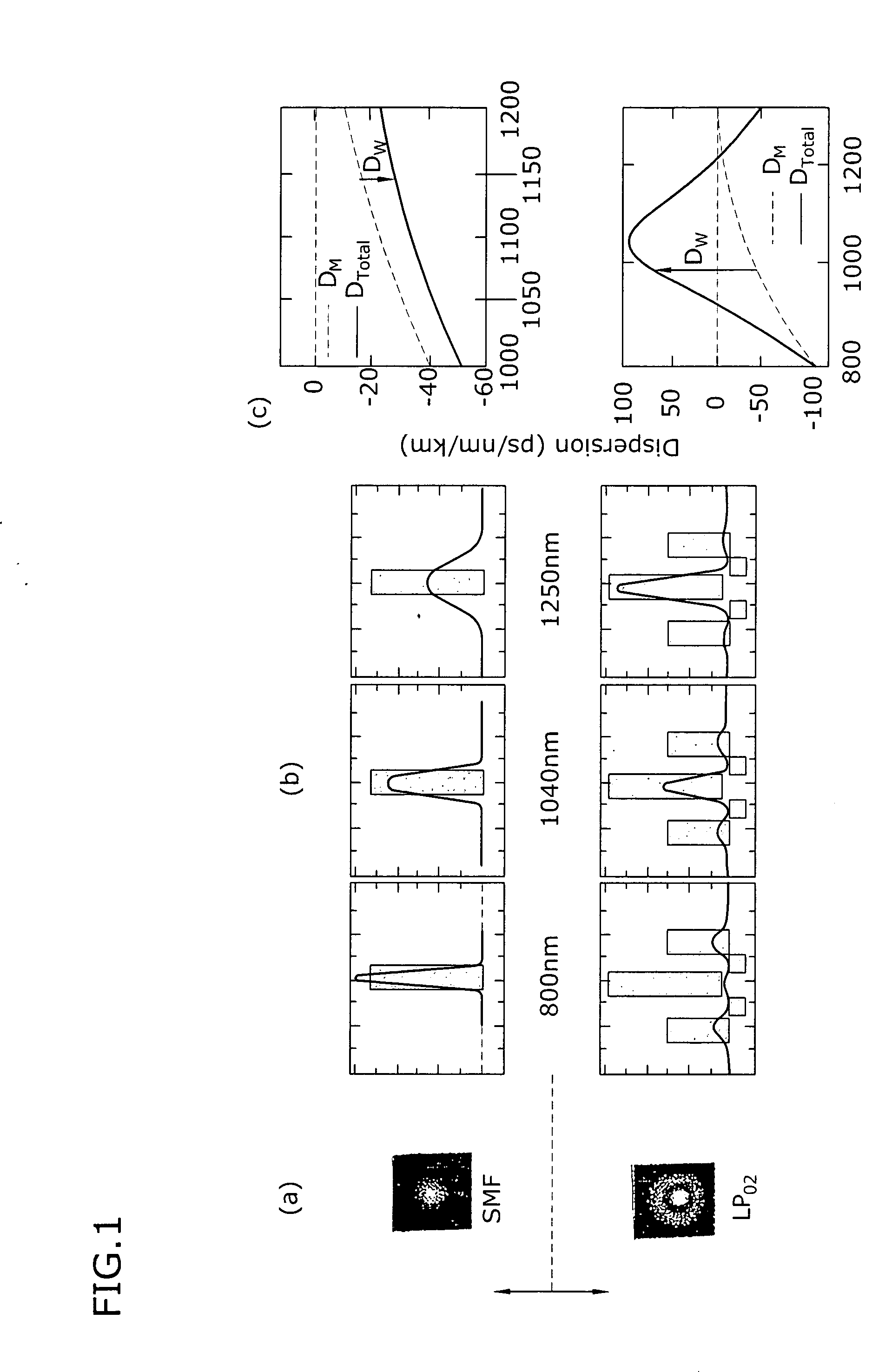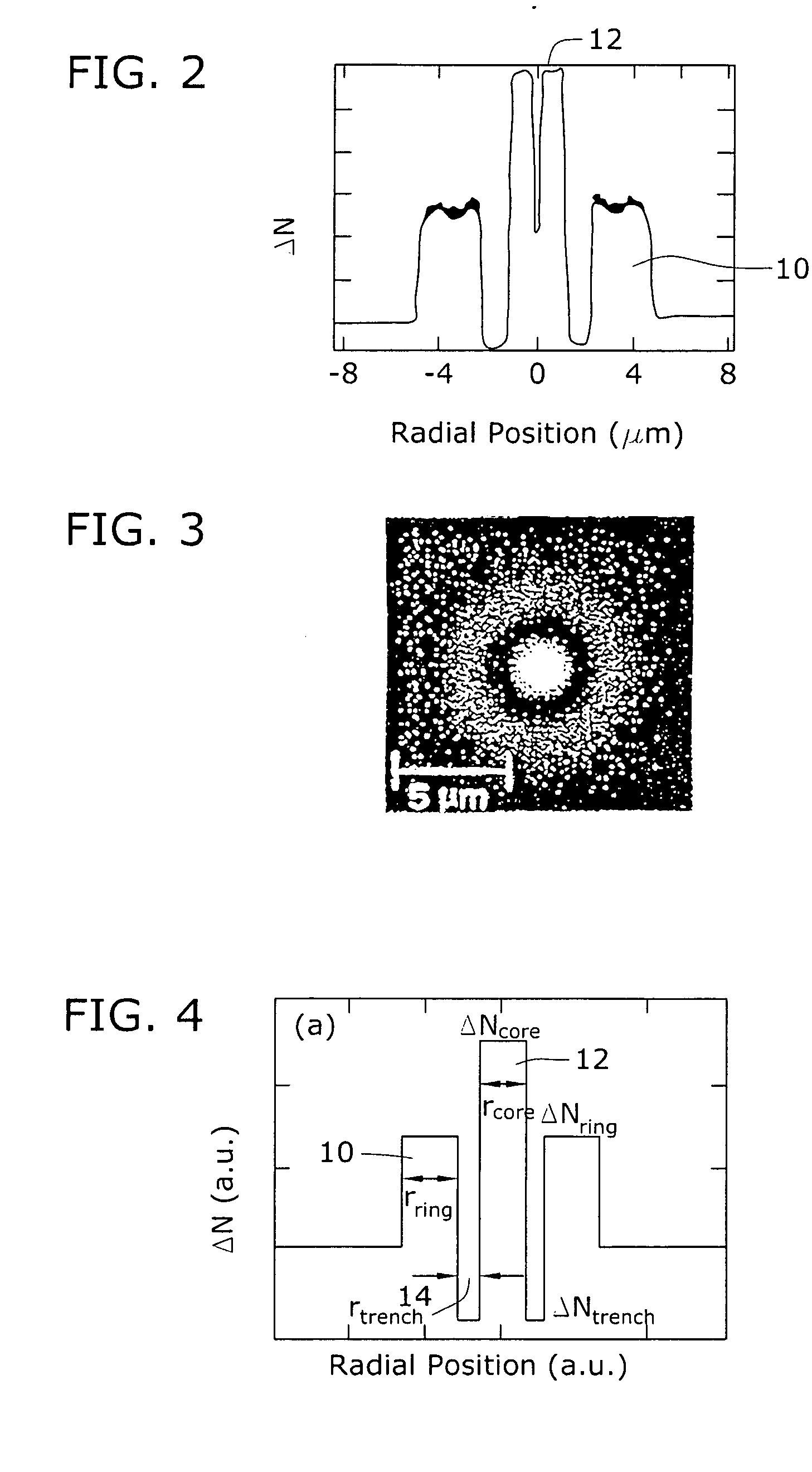Production of optical pulses at a desired wavelength utilizing higher-order-mode (HOM) fiber
a production method and fiber technology, applied in the field of optical pulses at a desired wavelength using higher-ordermode fibers, can solve the problems of limited wavelength tunability, limited multi-photon imaging applications of fiber sources including lasers, and restrict the applicability of lasers, so as to enhance the modal stability of the signal and enhance the modal stability
- Summary
- Abstract
- Description
- Claims
- Application Information
AI Technical Summary
Benefits of technology
Problems solved by technology
Method used
Image
Examples
Embodiment Construction
[0030]The present invention is directed to an arrangement for producing high energy, femtosecond output light pulses over a tunable wavelength range for wavelengths less than 1300 nm, using a relatively new type of fiber—higher-order-mode (HOM) fiber—that yields strong anomalous dispersion in the output wavelength range. Advantageously, the HOM fiber is an all-solid silica fiber structure (i.e., does not include air gaps or other microstructures) where the guidance mechanism is conventional index guiding. This represents a major breakthrough in fiber design, inasmuch as it was not previously considered possible to obtain anomalous dispersion at wavelengths shorter than 1300 nm in an all-silica optical fiber.
[0031]In accordance with the present invention, a higher-order-mode (HOM) fiber has been developed that is capable of achieving a strong positive (anomalous) waveguide dispersion (Dw) for the LP02 mode at wavelengths less than 1300 nm. In particular, an HOM fiber has been formed ...
PUM
| Property | Measurement | Unit |
|---|---|---|
| wavelengths | aaaaa | aaaaa |
| pulse energy | aaaaa | aaaaa |
| wavelength | aaaaa | aaaaa |
Abstract
Description
Claims
Application Information
 Login to View More
Login to View More - R&D
- Intellectual Property
- Life Sciences
- Materials
- Tech Scout
- Unparalleled Data Quality
- Higher Quality Content
- 60% Fewer Hallucinations
Browse by: Latest US Patents, China's latest patents, Technical Efficacy Thesaurus, Application Domain, Technology Topic, Popular Technical Reports.
© 2025 PatSnap. All rights reserved.Legal|Privacy policy|Modern Slavery Act Transparency Statement|Sitemap|About US| Contact US: help@patsnap.com



